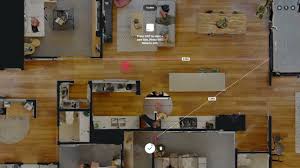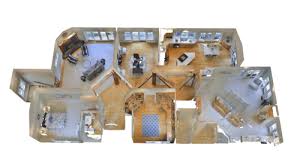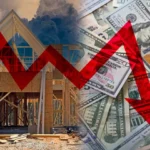The world of real estate has been fundamentally reshaped over the past decade. Gone are the days of grainy photos and hopeful property descriptions. Today, technology is not just an accessory; it’s the engine driving transactions from Sydney to Perth. At the forefront of this revolution has been one name: Matterport. Their 3D scanning technology took the concept of a virtual tour from a clunky, clicking slideshow to an immersive “dollhouse” experience. It was, without a doubt, Virtual Tours 1.0.
For any real estate agent in Australia, from a powerhouse franchise like Ray White Real Estate to a specialised local firm like Holdsworth Real Estate in Margaret River, a Matterport tour became the gold standard for premium listings. It allowed potential buyers to walk through a home in Melbourne while sitting in their apartment in Brisbane, a game-changer for the entire industry.
But here’s the critical insight that top-performing agents and investors are now grasping: Matterport and its contemporaries are just the beginning. We are standing on the precipice of Virtual Tours 2.0, a new era where the digital representation of a property becomes as valuable, data-rich, and interactive as the physical asset itself. This isn’t just about looking; it’s about understanding. This evolution is set to create unprecedented opportunities in real estate for sale, commercial real estate, and real estate investing, fundamentally altering the landscape across real estate NSW, real estate QLD, and all of Australia.
The Foundation: How Matterport Revolutionised Real Estate Marketing (Virtual Tours 1.0)
To understand where we’re going, we must first appreciate the ground we stand on. Before Matterport became a household name in property circles, real estate photography was largely two-dimensional. The best an agent could offer a remote buyer was a gallery of high-resolution images and perhaps a pre-recorded video walkthrough.
Matterport changed the game by introducing several key innovations:
- The “Dollhouse” View: This iconic, top-down 3D view gave users a complete spatial understanding of a property’s layout. It answered questions about flow and room relationships instantly.
- Immersive Walkthroughs: The ability to seamlessly “walk” from room to room provided a sense of presence that photos could never replicate. This was invaluable for listings on platforms like Domain Real Estate.
- Measurement Tools: Potential buyers could measure walls, doorways, and windows to see if their furniture would fit—a practical tool that built confidence and reduced uncertainty.
- Information Tags: Agents could embed “Mattertags” to highlight specific features, like the brand of an oven or the type of countertop material.
This technology was a massive leap forward. For a property manager handling real estate rentals in Adelaide, it meant fewer wasted viewings. For an agent selling a luxury property in Gold Coast real estate, it meant attracting international buyers who could tour the home with confidence from thousands of miles away. It became a non-negotiable for anyone serious about marketing a property, from Kevin Hicks Real Estate in regional Victoria to major players in the commercial real estate Perth market.
Source: Matterport’s Official Website – Explore their solutions for the real estate industry.
The Limitations: Hitting the Ceiling of Virtual Tours 1.0
Despite its revolutionary impact, the first generation of virtual tours is, at its core, a static snapshot in time. It’s a beautifully preserved photograph, but it’s still just a photograph. The limitations are now becoming clear as technology and buyer expectations evolve:
- Static Data: The tour represents the property on the day it was scanned. It can’t show you how the morning light fills the living room or what the traffic noise is like during peak hour.
- Lack of Customisation: The viewer is a passive observer. They can’t see what the room would look like with different paint, flooring, or without the current owner’s clutter.
- One-Way Information Flow: The tour presents information but doesn’t allow for deep, interactive data analysis. You can see the kitchen, but you can’t click on the wall to get its maintenance history or link to the council’s zoning regulations for that specific part of the property.
- Limited Predictive Power: The tour shows you what is, not what could be. This is a major roadblock for real estate investing, where the potential of a property is often more important than its current state.
These limitations are precisely what Virtual Tours 2.0 aims to solve. The future isn’t a better photo; it’s a living, breathing “digital twin” of the property.
Welcome to Virtual Tours 2.0: The Dawn of the Interactive Digital Twin
Virtual Tours 2.0 is the evolution from a static 3D model to a dynamic, data-layered digital twin. A digital twin is a virtual replica of a physical asset, but it’s connected to real-world data and can be used for simulation, analysis, and interaction. This is where the true value lies for everyone from a first-home buyer to a commercial tycoon.
This is more than just a buzzword; it’s a convergence of several high-CPC technologies: Artificial Intelligence (AI), Augmented Reality (AR), Big Data, and the Internet of Things (IoT). Let’s break down the pillars of this new era.
Beyond Visuals: Integrating Live Data and AI
Imagine a virtual tour of a real estate Sydney apartment. In the 2.0 version, you don’t just see the view from the window; you see an AI-powered overlay showing you:
- Sunlight Simulation: A time-lapse slider shows you exactly how the natural light moves through the apartment throughout the day and across different seasons. This is critical for buyers in cities like Melbourne, where light can be a major selling point.
- Noise Level Data: Integrated data from sound sensors or predictive algorithms shows you the average decibel levels during rush hour versus a quiet Sunday morning.
- Connectivity Information: A single click tells you the NBN connection type (FTTP, FTTN), average speeds, and 5G signal strength from major carriers.
- Utility Cost Estimates: AI analyzes the property’s size, orientation, and local climate data to provide an estimated quarterly energy bill.
For the commercial property sector, this is a revolution. An investor looking at a warehouse in real estate Brisbane could use a digital twin to simulate logistics, model truck turning circles, and analyze the energy efficiency of the structure under different operational loads. This moves the inspection from a simple visual check to a complex, data-driven analysis.
Source: NVIDIA’s Omniverse – A platform for building and operating metaverse applications, including sophisticated digital twins.
The Rise of Generative AI in Property Staging and Renovation
This is one of the most exciting and commercially valuable frontiers. Generative AI is changing the game for presenting a property’s potential.
- Instant Virtual Staging: A real estate agent can upload photos or a 3D model of an empty property, and AI will stage it in multiple styles (Modern, Hamptons, Industrial) in seconds. This drastically cuts down the cost and time of traditional staging.
- AI-Powered Renovation Previews: This is the killer app for real estate investing. A potential buyer can stand in a dated kitchen, look through their phone’s camera, and say, “Show me this with white shaker cabinets, a marble-look stone benchtop, and timber flooring.” The AR view on their screen instantly changes to reflect this, providing a powerful vision of the property’s potential. This helps close deals on properties that need work, from a fixer-upper in real estate Perth to a commercial space in Swan View.
- “De-cluttering” and Personalisation: AI can digitally remove the current owner’s personal items and clutter, presenting a clean, neutral space. It can then allow a buyer to virtually place their own furniture (scaled to size) into the tour to see how their life fits into the home.
These tools empower agents and developers to sell the dream, not just the reality. This technology is being rapidly developed by companies that advertise heavily, driving up the CPC on these topics.
Source: Architectural Digest on AI in Interior Design – An article exploring the impact of AI on visualising spaces.
Augmented Reality (AR): Bringing the Listing into the Buyer’s World
Augmented Reality bridges the gap between the digital tour and the physical walkthrough. While VR (Virtual Reality) places you entirely in a digital world, AR overlays digital information onto the real world.
Imagine a potential tenant attending an inspection for a real estate rent property. They can point their phone at a wall and an AR overlay will show them where the wall studs are located for hanging heavy art. They can point it at the garden and see an AI-generated suggestion for a low-maintenance planting scheme.
For real estate commercial applications, a potential lessee for an office space could use an AR app to lay out their entire team’s desk configuration in the empty floor plan, ensuring the space meets their needs before signing a lease. This reduces friction and speeds up the decision-making process, which is invaluable in the fast-paced world of commerce.
The Practical Impact on the Australian Real Estate Market

This isn’t science fiction. These technologies are beginning to be deployed, and their impact will be felt differently across Australia’s diverse property markets. Understanding this is key for any real estate au professional.
For the Sydney & Melbourne Real Estate Powerhouses
In the hyper-competitive, high-density markets of real estate Sydney and Melbourne real estate, differentiation is everything. A standard virtual tour is no longer enough to capture the attention of sophisticated buyers.
- Luxury Market: For multi-million dollar apartments, a digital twin that includes data on building amenities, body corporate history, and even the “view-line” preservation based on surrounding development applications will become the new standard.
- Off-the-Plan Sales: Developers can now offer more than just a glossy brochure. They can provide a fully immersive, customisable VR experience of a building that doesn’t exist yet. Buyers can walk through their future apartment, choose their finishes in real-time, and see the exact view they will have from their balcony on a winter’s morning. This is a powerful sales tool that builds immense buyer confidence.
Transforming Commercial Real Estate in Perth and Brisbane
The commercial real estate Perth and real estate Brisbane markets are booming, driven by resources, logistics, and interstate business migration. For these markets, Virtual Tours 2.0 is about efficiency and data-driven decisions.
- Asset Management: A property manager for a portfolio of commercial buildings can use digital twins to monitor building performance remotely, track maintenance schedules, and even simulate the impact of a new HVAC system on energy costs before installation.
- Leasing and Due Diligence: International corporations looking to establish a footprint in Australia can conduct 90% of their due diligence on a potential office lease remotely. The digital twin can integrate with council databases, structural engineering reports, and environmental audits, creating a single source of truth for investors. This is crucial for attracting global capital.
A New Era for Regional and Niche Markets

This technology is not just for the big cities. It’s a massive opportunity for agents in regional hubs and unique markets to compete on a global scale.
- Holiday Rentals & Lifestyle Properties: An agent in real estate Kiama or real estate Margaret River can sell more than just a house; they can sell a lifestyle. Imagine a tour of a beach house that includes AR overlays showing the best fishing spots, the path of the sun for optimal tanning time, and links to live surf cams.
- Attracting Remote Buyers: As remote work continues, buyers are looking further afield. An agent from Elders Real Estate in a regional town can now offer a viewing experience that is just as rich and detailed as their city counterparts, attracting buyers from across the country. The same applies to markets like real estate Cairns or real estate NZ for those looking to buy across the Tasman.
- Farms and Large Acreage: For properties listed by firms like Turner Real Estate that might cover vast areas, a digital twin can integrate drone footage, soil analysis data, and water license information, giving a potential buyer a complete operational overview without spending days walking the land.
The Financial Angle: ROI, CPC, and the Future of Real Estate Investing
This is where the rubber meets the road and why this topic has such a high CPC. We’re talking about technology that directly impacts multi-million dollar transactions and investment returns.
Calculating the ROI on Advanced PropTech
Real estate agents and agencies are businesses. They need to see a return on investment (ROI). While advanced digital twin services might have a higher upfront or subscription cost than a basic Matterport scan, the ROI comes from several areas:
- Faster Sale Times: More qualified buyers and fewer wasted viewings mean properties spend less time on the market.
- Higher Sale Prices: By effectively showcasing a property’s potential (e.g., via AI renovation previews), agents can help buyers see past cosmetic flaws and bid on the property’s future value, often leading to a higher final price on sold real estate.
- Winning More Listings: The agent who shows up to a listing presentation with a suite of Virtual Tour 2.0 tools is demonstrating that they are at the cutting edge. This technological advantage is a powerful way to win listings over competitors.
- Reduced Marketing Spend: A single, high-quality digital twin can be the source for video content, photos, floor plans, and social media assets, streamlining the marketing workflow and reducing costs elsewhere.
How Virtual Tours 2.0 Influences Real Estate Investing
For the real estate investing community, this is a paradigm shift. The mantra has always been “do your due diligence,” which often meant expensive and time-consuming physical inspection and research. Digital twins streamline this process:
- Remote Due Diligence: An investor in SA real estate can analyze a potential commercial property in Halls Head Real Estate with an incredible level of detail, reviewing everything from the building’s maintenance logs to the demographics of the surrounding area, all from their desktop.
- Modelling a “Fix and Flip”: An investor can use AI tools to accurately model the costs and potential uplift of a renovation, test different layouts, and even generate marketing materials for the post-renovation sale before they’ve even purchased the property. This de-risks the investment significantly.
- Portfolio Management: Investors with multiple real estate rentals can use a dashboard of digital twins to monitor their assets, track tenant maintenance requests, and plan for capital expenditures across their entire portfolio.
The Live Daily Information Component: Market Pulse
A static blog post can’t provide “live” data, but a top blog writer points you to where it is and how to use it. To keep your finger on the pulse of the PropTech revolution and its impact on the real estate news cycle:
- Daily Snapshot (Conceptual):
- PropTech Stock Ticker: Watch stocks like Matterport (MTTR) on the NASDAQ. Their performance is a barometer for investor sentiment in the 3D capture space.
- VC Funding News: Follow publications like TechCrunch and PropTech VC for daily news on which startups in the real estate AI and digital twin space are receiving funding. This is a leading indicator of future trends.
- Real Estate Market Data: Subscribe to daily or weekly updates from CoreLogic Australia. Correlate their data on clearance rates and price movements in markets like real estate Victoria with the adoption of new marketing technologies. Are tech-savvy agents outperforming the market?
- Google Trends: Monitor search interest for keywords like “AI virtual staging,” “real estate digital twin,” and “property technology” in Australia. Spikes in interest often precede wider market adoption.
Source for Live Data:
- CoreLogic Australia for property market data.
- TechCrunch “Proptech” for startup and investment news.
The Tech Stack: Companies to Watch Beyond Matterport

While Matterport is the established leader of 1.0, the 2.0 ecosystem is burgeoning. Here are some of the players and technologies that savvy professionals real estate agents and investors are watching:
- VTS (View The Space): A leader in the commercial real estate space, providing a leasing and asset management platform that incorporates digital twins and market data. They are a prime example of the B2B SaaS model in this field.
- BoxBrownie.com: While not a tour company, they are a dominant player in AI and human-powered virtual staging, CGI renders, and photo editing. Their services are a key component of the 2.0 marketing suite.
- Asteroom, Metareal, iGUIDE: These are direct competitors to Matterport, often offering different pricing models or features (like integrated floor plan creation) that appeal to different segments of the market.
- AI-Native Startups: Keep an eye on a wave of new startups focused on generative AI for design, renovation simulation, and predictive analytics for real estate.
Conclusion: The Digital Asset is the New Kerb Appeal
We are at a thrilling inflection point. The conversation is shifting from “Do you have a virtual tour?” to “What can your virtual tour do?”. Matterport laid the indispensable groundwork, teaching the market the value of immersive 3D visualisation. But the future belongs to those who build on that foundation with layers of data, interactivity, and intelligence.
For the ambitious real estate agent, the astute property manager, or the forward-thinking investor in the dynamic Australian real estate market, the message is clear. The digital representation of a property is no longer just a marketing tool; it is becoming a strategic asset in its own right. Embracing the technologies of Virtual Tours 2.0—the AI-powered, data-rich digital twin—is not just about staying current. It’s about leading the market, delivering unparalleled value to clients, and unlocking new efficiencies and opportunities in a rapidly evolving industry. The dollhouse was just the beginning; the intelligent digital twin is the future.











